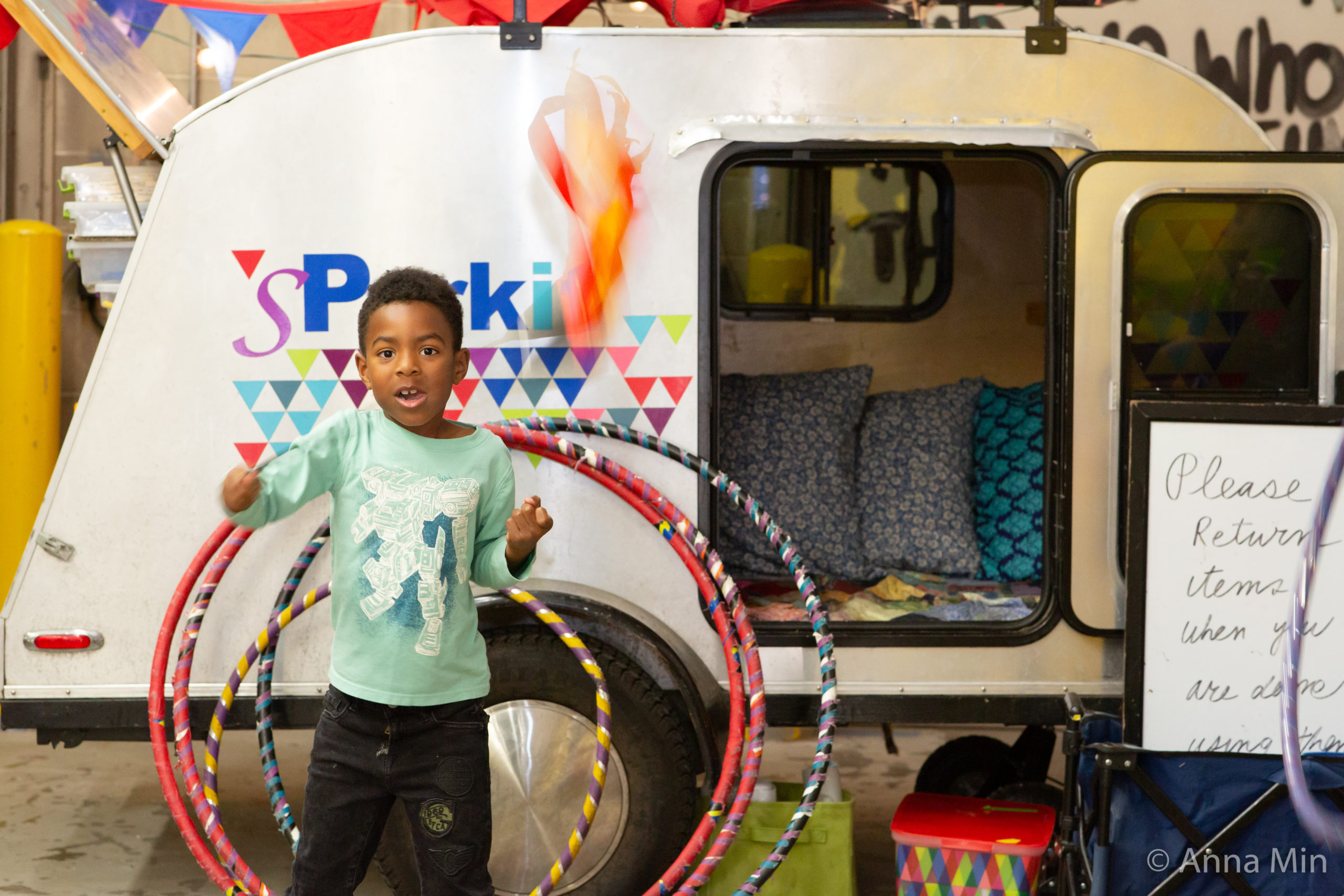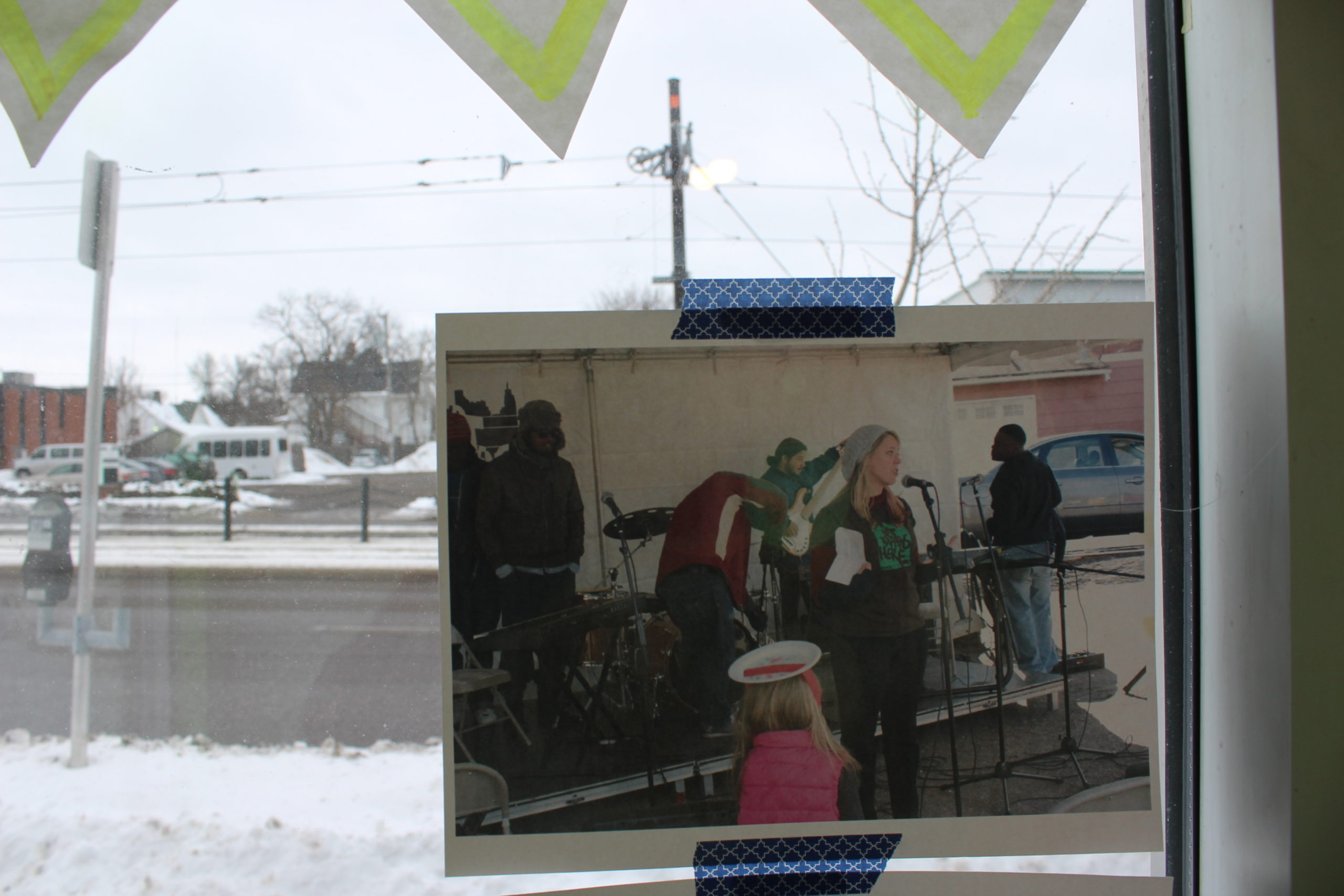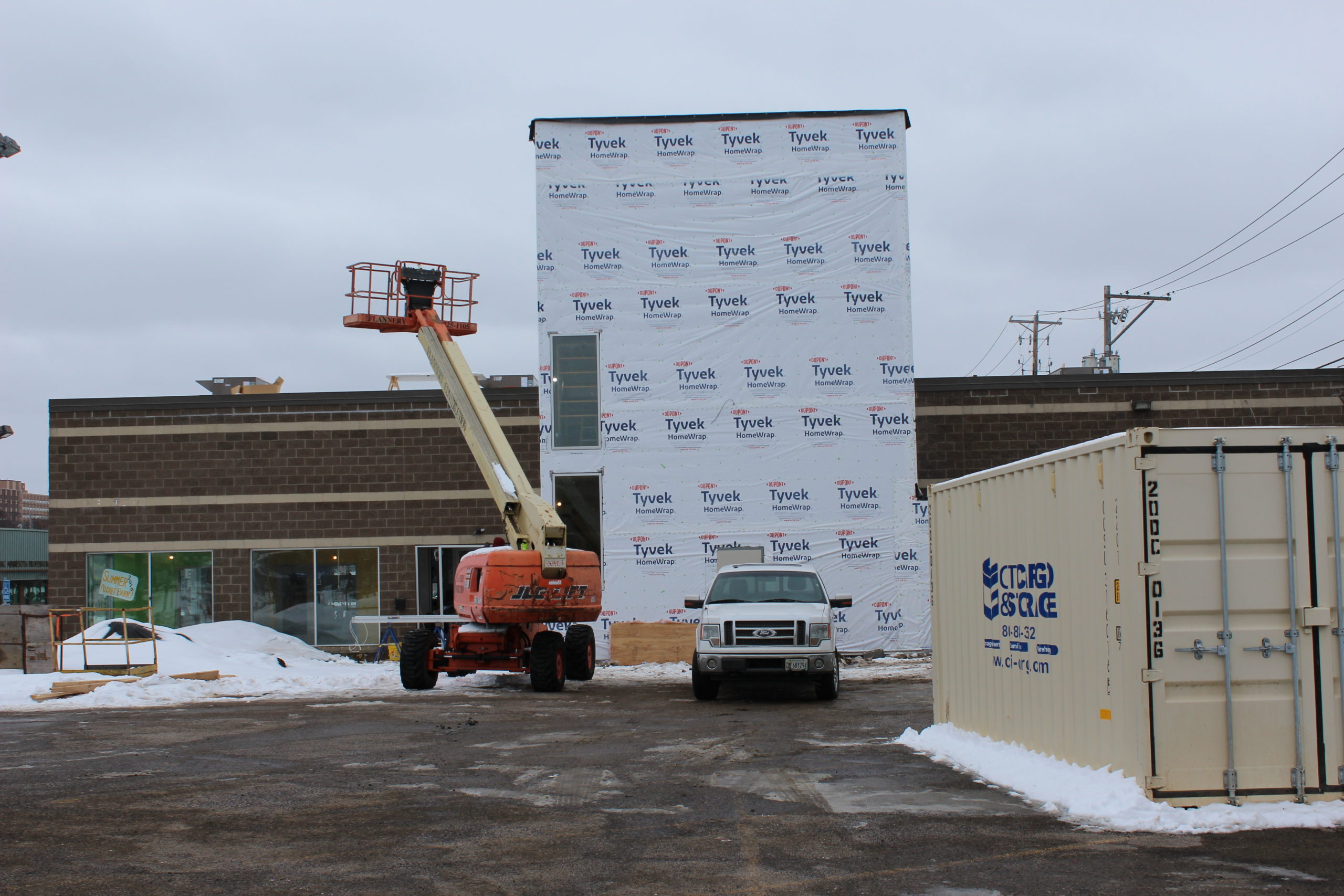Springboard for the Arts’ St. Paul location is moving at the end of February, leaving our longtime home at the Northern Warehouse Building in Lowertown for a newly renovated space on University Avenue. We are moving from what was once a warehouse to what was once a used car dealership. The Northern Warehouse has been our home for more than 20 years, and in that time we have grown and changed a lot. While our focus on supporting artists making a living and a life has stayed constant, the ways we have approached the work have expanded, and the context has evolved. This move and new space represents another big evolution in our work to foster and support creative people power.
As we prepare for this big change (and tend to a million last minute details of packing, construction, and budgets) we are holding fast to these guiding principles and touchstones to keep us on track and remind us why we’re doing all this:
Center the neighborhood
When Springboard started exploring the idea of moving more than 3 years ago, we knew that we wanted to be on the east end of University Avenue. We have had the opportunity to collaborate and learn from so many artists, organizers and community organizations in Frogtown and Rondo over the last decade and the invitation to be a part of this neighborhood in a deeper way is both exciting and a responsibility we take very seriously. We believe that whatever happens at 262 University has to support and amplify the individual agency and collective power of the people in the neighborhood. The design and future programming of the space has already been informed by over 200 community groups and 6,000 people who used the space before we made any changes to it and its future will be guided through partnership and collaboration.
Center artists
Springboard’s work has always been about supporting, amplifying and connecting the creative people that exist in our communities. This new space creates opportunities to do this work in new ways. We will be able to offer artists and culture makers dedicated space to organize, to program, to sell their work, to perform, to teach and to create shared experiences. Our hope is that this space is demonstration of the value of creativity and culture and that it invites others to bring artists to the table as decision makers and influencers. This space will help build markets and audiences for artist-entrepreneurs and help the public connect directly with those entrepreneurs. We will also be able to offer new resources that help artists make a living and a life: watch for the new Vickie Benson Artists Resource Lab* later this Spring!
 Playing with the SparkIt Trailer at the SpringBOX groundbreaking event in August 2019. Photo Credit: Min Enterprises Photography LLC.
Playing with the SparkIt Trailer at the SpringBOX groundbreaking event in August 2019. Photo Credit: Min Enterprises Photography LLC.
Create green space and environmental health where there was asphalt
The giant asphalt parking lot adjacent to the building is a symbol—not just of a bygone era or single auto-centric business, but of the long-term impact of systemic disinvestment, racism and marginalization of communities of color and immigrant and refugee communities. The environmental and public health impacts of redlining and the highway construction of the 50s and 60s are still being uncovered and understood to have long term health effects. Springboard is committed to equity as a foundational principle and we are committed to being a part of reversing these trends: creating a parklet, rain garden and trees and native grasses where there was asphalt, installing solar panels on the roof and a rainwater harvesting tank and system to conserve and tend our natural resources. Our hope is that these small actions on this site will serve as learning opportunities and demonstration projects that inspire and move others to action.
Create economic opportunity where there was extraction
The economic systems we live under and that we participate in are designed to extract wealth from urban neighborhoods and rural places, in the form of culture, ideas, natural resources and labor, and use it for someone else’s gain. Springboard is invested in the idea that artists can be part of building new systems that recognize the many forms of wealth that exist in our communities already and create the pathways for those communities to be the ones who benefit from their own resources. We believe our role should be to help the seeds take root and grow in place, rather than to extract the seeds to grow wealth for someone else. If we are going to realize the benefits that art and culture bring to our community, then we need to make sure that more artists, and especially artists who have historically not benefited from the nonprofit arts system, can make a living and a life. Artists, just like other entrepreneurs, need access to capital, healthcare, housing and other resources.
A parking lot is accidentally preserved public space
We had a party in the parking lot of 262 University over 8 years ago. We were looking for a public space to host artists, neighborhood food entrepreneurs, and community members for celebration, dancing, a cake walk and a puppet show. We realized that this huge parking lot of a vacant used car dealership was the perfect space. Serendipitously, when we were looking for a new space, this same site became available and now here we are. We always say artists can see the opportunity in challenge and where some might see a giant asphalt expanse, we see an amazing public space. Just as neighborhoods need density, housing and transit, neighborhoods also need spaces for gathering, for play, for shared experience and for wild possibility. We are invested in demonstrating that unloved and overlooked spaces can be reused in ways that contribute to the health and culture of a community.
 Springboard for the Arts Executive Director Laura Zabel speaks at the 2012 Irrigate party in what would become the SpringBOX parking lot, in a photo up at the construction site. Photo Credit: Carl Atiya Swanson.
Springboard for the Arts Executive Director Laura Zabel speaks at the 2012 Irrigate party in what would become the SpringBOX parking lot, in a photo up at the construction site. Photo Credit: Carl Atiya Swanson.
Design for joy and welcome
Our biggest hope when we were looking for space was to find a first floor location. We saw the impact on the accessibility and vibrancy of our work when we moved our Fergus Falls office to a corner storefront and we wanted that same street-level access in St. Paul. Friendly, welcoming, easy to navigate, creative, and comfortable are the words we use the most as we have planned this space. Practical additions like an elevator (that goes all the way to the roof!), doors with press pad entries, wide hallways and open spaces will make the space accessible. The location of building along transit, with artist-designed bike-racks and improvements that encourage walkability will make Springboard’s services and programs easier to access for artists across the region. Artist commissions and partnerships with local makers will make the space a demonstration of the strength of our local creative community and economy.
Design for flexibility and responsiveness
We want this space and place to help redefine what an art space can be and do. This new kind of cultural space is neighborhood scale, cross-sector and recognizes the value of creativity in place, economic opportunity, neighborhood engagement, and community health. We have said we don’t want the building or the site to feel “done” when we open. We have tried to maintain as much flexibility, open space and opportunities for others to make their creative mark, to respond to urgent issues and for the design and feel of the spaces to continue to evolve.
Be a hub and home
Most of all, we want this new space to feel like a hub and home. A busy hive of activity that supports people’s ability to make work, make change, make a living and make friends. And a comfortable, accessible spot for dreaming, organizing, imagining and doing. A place where you can drop in with a weird question, an exciting idea, an urgent need or generous offer and get connected to other people who care about those things, too.
We have high expectations for this place, and ourselves in this moment of change and growth, intentionally so. We also know we won’t get it all right—not right away and not ever. We’re building in time for learning, reminding ourselves to be patient and counting on our communities for feedback and ideas for how to make what we’re building together better.
 Progress at the construction site! Photo Credit: Carl Atiya Swanson.
Progress at the construction site! Photo Credit: Carl Atiya Swanson.
*Vickie Benson is a Minnesota-based leader in artist support and arts philanthropy. Her work on behalf of individual artists at the McKnight Foundation, Jerome Foundation, National Endowment for the Arts and Grantmakers in the Arts inspires and guides us. Naming our Artists Resource Lab in honor of Vickie is a daily reminder of our aspiration to serve our creative community with mindfulness, empathy and tenacity.
